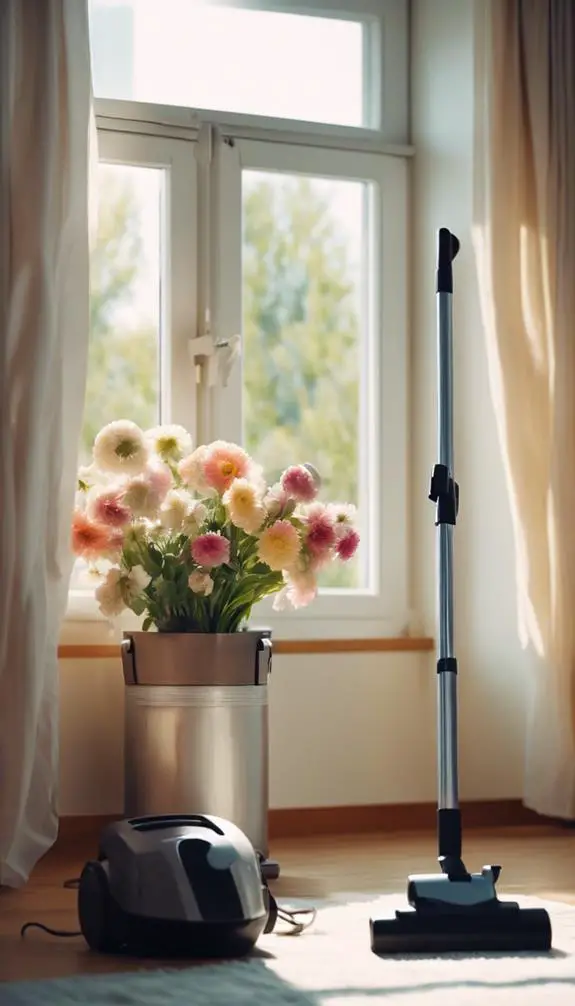As you stand amidst the chaos of your cluttered space, you can't help but feel overwhelmed. It's time to take control and tackle that mess once and for all. But where do you even begin? Start by acknowledging that it's not just about tidying up – it's about creating a system that works for you and your lifestyle. You'll need to develop a decluttering mindset, sort items into keep and discard piles, and assign designated spaces for everything. And that's just the tip of the iceberg. Are you ready to transform your space and simplify your life?
Summary
- Identify clutter patterns and develop a decluttering mindset by starting with a small area and sorting items into keep, donate/sell, and discard piles.
- Sort documents and items into categories, being ruthless about getting rid of unnecessary and broken items, and focus on removing clutter to save time.
- Assign a designated space for each item in the home, making sure everyone knows where things go, and use storage bins, shelves, and hooks to maximize space.
- Set up digital folders mirroring physical file systems, invest in cloud storage, and create clear and descriptive file names with tags or labels.
- Create a schedule for seasonal tasks, break down larger tasks into smaller chunks, and assign family roles to make organization a team effort.
Decluttering 101: Where to Start

Getting started with decluttering can feel like climbing a mountain, but taking the first step is often the hardest part.
You'll need to identify your clutter patterns – are you a sentimental saver or a busy bee who lets messes pile up? Understanding your habits will help you develop a decluttering mindset.
Start by choosing a small area, like your dresser or a single shelf, and clear everything off.
Sort items into three piles: keep, donate/sell, and discard. Be honest with yourself about each item – when was the last time you used it, and do you truly need it?
As you sort, ask yourself why you're holding onto each item. Is it fear of letting go or a genuine need?
Purge Paper Clutter for Good
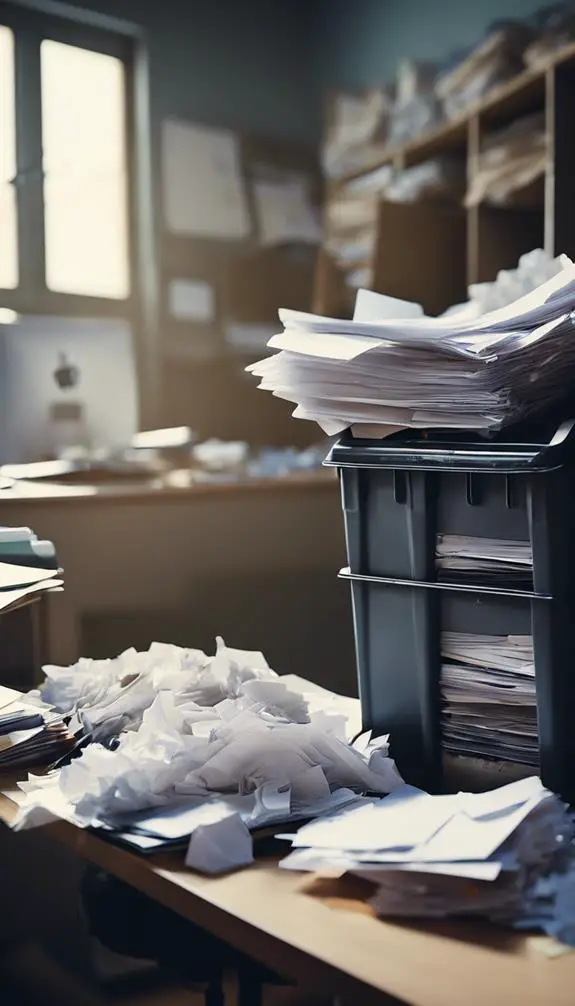
By the time you've tackled that small area, you're likely to have uncovered a significant amount of paper clutter – bills, receipts, bank statements, and more.
It's time to purge this paper clutter for good. Start by sorting documents into categories, such as "keep," "recycle," and "shred."
Be ruthless – if you don't need it, get rid of it. Consider investing in a document scanning service or doing it yourself to digitize important documents, moving towards a paperless office.
Set up a system for regularly reviewing and recycling paper documents to prevent clutter from building up again.
Organize Your Digital Life

Hundreds of digital files, scattered across your devices, are crying out for organization.
It's time to create a system that makes sense and saves you time. Start by setting up digital folders that mirror your physical file system. This will help you quickly locate files and avoid duplication.
Next, consider investing in cloud storage, like Google Drive or Dropbox, to access your files from any device. Create clear and descriptive file names, and use tags or labels to categorize them further.
Simplify Your Closet Space

Your closet space is a reflection of your personal style, but when clutter takes over, it's hard to find what you need, let alone express yourself.
To achieve your closet goals, start by purging items you no longer wear or need. Consider a closet makeover by categorizing items into three piles: keep, donate/sell, and discard. Be ruthless – if you haven't worn it in a year, it's probably safe to let it go.
Once you've decluttered, organize your remaining items by type, season, and frequency of use. Use storage bins, shelves, and hooks to maximize your space.
Create a Home for Everything
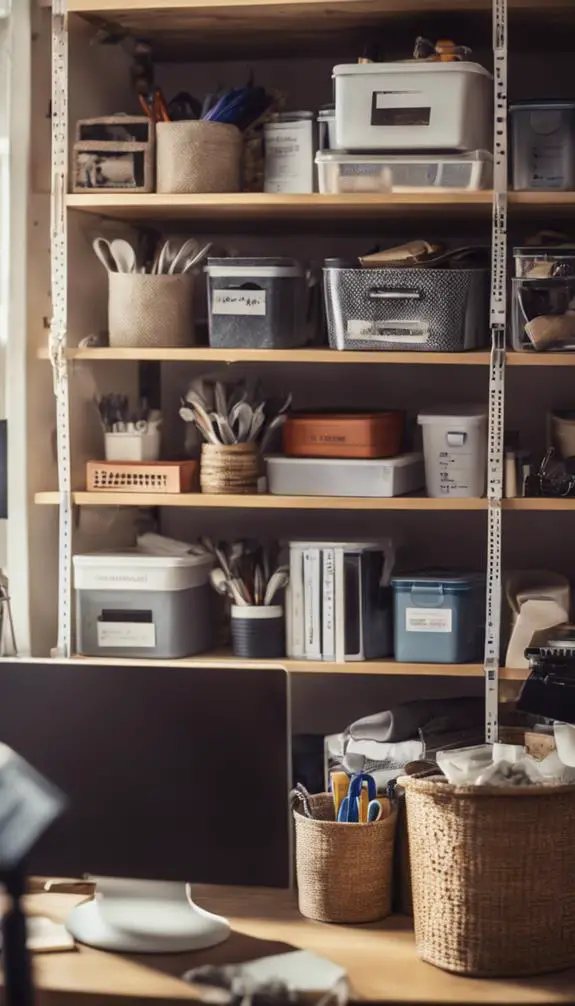
You'll be more organized and save time in the long run by assigning a designated space for each item in your home.
This means deciding where everything will live, from your keys to your cleaning supplies, and making sure everyone in the household knows where things go.
Assign a Designated Space
Every item in your home needs a designated space where it can be stored and easily found when needed.
This is where space planning comes in – this is crucial to allocate zones for different activities and items.
For instance, designate a specific area for your keys, wallet, or bag near the entrance.
This zone allocation will help you develop a habit of putting things back in their assigned space, making it easier to find what you need.
By doing so, you'll reduce clutter and save time searching for misplaced items.
As you assign a designated space for each item, you'll be able to maintain a more organized and peaceful living environment.
Establish a Home Base
In addition to assigning a designated space, creating a home base for each item is essential to maintaining organization and reducing clutter.
This means designating a specific area where you'll always keep an item, making it easy to find and put away. For example, create a home base for your keys near the entrance of your home, or for your cleaning supplies in a designated closet.
To establish an effective home base, consider the Home Base Essentials: a designated spot, a container or bin, and a label.
Having a decluttering station with a trash can, recycling bin, and donation box can also help you sort and purge items efficiently.
Tackle the Kitchen Chaos

You're now ready to tackle the kitchen chaos that's been building up all year.
Start by clearing everything off your countertops and sorting items into categories, like baking supplies or breakfast essentials.
Next, turn your attention to your cabinets, where you'll sort and purge items, getting rid of anything expired, broken, or no longer useful.
Clear the Countertops
The kitchen countertop, often the hub of meal prep and cooking, can quickly become cluttered with appliances, utensils, and food items, making it difficult to focus on the task at hand.
To clear the countertops, start by removing everything and giving the surface a thorough sanitation. Wipe down the entire area with a disinfectant and let it dry before putting back only the essentials.
Consider a countertop decor that promotes functionality, such as a utensil organizer or a spice rack. Assign a designated spot for each item, ensuring they're easily accessible yet out of the way.
Sort and Purge Cabinets
Your kitchen cabinets are likely a treasure trove of cooking essentials, but also a potential breeding ground for clutter and chaos.
It's time to tackle the disorganization and create a space that's functional and stress-free. Start by removing everything from your cabinets and sorting items into categories, such as baking supplies, dinnerware, and cooking utensils.
Be ruthless – if you haven't used it in the past year, consider donating or discarding it.
Set Cabinet Goals, like designating a shelf for specific items or implementing a "first in, first out" system for perishable goods.
Use Shelf Organization techniques, like baskets or dividers, to maximize storage and keep similar items together.
Streamline Your Bathroom Routine
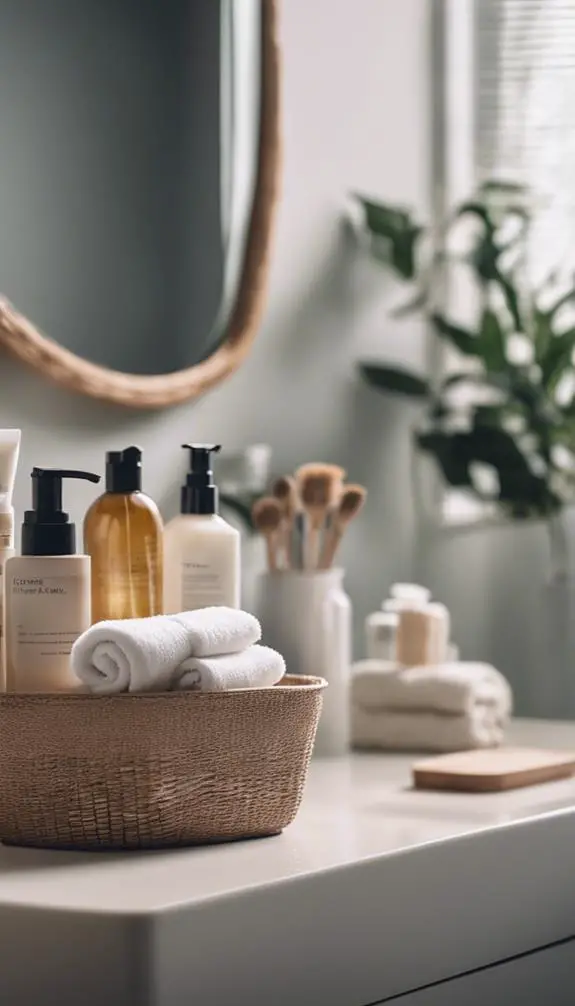
Daily, the bathroom can become a cluttered and chaotic space, making your morning routine feel more like a marathon than a rejuvenating start to the day.
To streamline your bathroom routine, start by categorizing your bath essentials into morning prep must-haves and nice-to-haves.
Designate a specific spot for each item, ensuring everything has a home. Store frequently used items, like toothbrush and toothpaste, in easy-to-reach locations.
Consider investing in a shower caddy or bath organizer to maximize storage.
Make Bedtime a Breeze
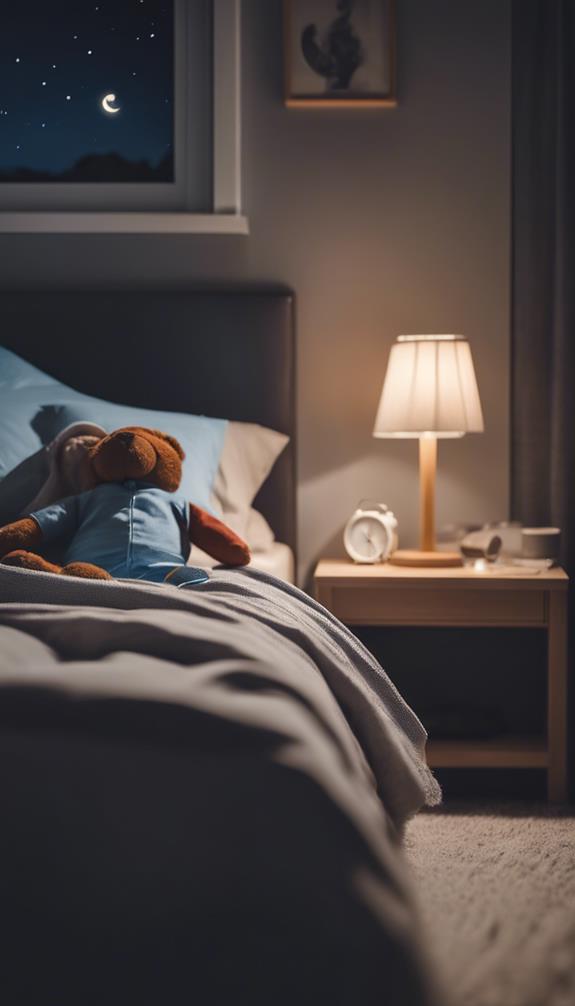
Beyond the morning rush, bedtime can be just as overwhelming, turning what should be a relaxing wind-down into a stressful scramble.
To make bedtime a breeze, start by creating a sleep sanctuary. Invest in blackout curtains, a white noise machine, or a comfortable mattress to guarantee a restful night's sleep.
Next, prep your pajamas the night before by laying them out or placing them in a designated spot, so you're not scrambling to find them when it's time to wind down. By doing so, you'll save time and energy, allowing you to unwind and recharge for the next day.
Conquer the Living Room Clutter

Now that you've optimized your bedtime routine, it's time to tackle the living room, which often becomes a catch-all for clutter.
Start by sorting items into categories: keep, donate, and discard. Be ruthless – if you haven't used it in the past year, it's probably safe to get rid of it.
Next, consider Furniture Rearrangement to create Cozy Corners that invite relaxation. Rearrange your furniture to create conversation circles and intimate nooks.
Don't forget to declutter surfaces, like coffee tables and shelves, by storing items in decorative baskets or bins. Finally, add some greenery to bring life to the space.
With these simple steps, you'll be well on your way to a clutter-free living room that's perfect for relaxing and socializing.
Don't Forget the Garage

As you tackle your spring cleaning, don't overlook the garage, which can quickly become a cluttered space.
You'll want to clear out clutter fast, getting rid of items you no longer need or use, and then organize your tool storage so everything has a designated spot.
Clear Out Clutter Fast
Your cluttered spaces are suffocating you, and it's time to break free.
Crucial to clear out clutter fast, especially in your garage, where it can quickly accumulate.
Start with a Fast Purge, setting a timer for 20 minutes and speed decluttering as much as possible.
Focus on removing broken, outdated, or unnecessary items.
Sort items into three piles: keep, donate/sell, and discard.
Be ruthless – if you haven't used it in a year, it's probably safe to get rid of it.
Once you've purged the clutter, take a step back and assess what's left.
You'll feel a sense of relief and accomplishment, and you'll be ready to organize what's left.
Organize Tool Storage
With your garage decluttered, you're ready to tackle tool storage.
Start by designating a specific area for your tool box. Consider installing a pegboard on the wall or using a mobile tool chest to maximize storage capacity.
Next, categorize your tools into groups, such as hand tools, power tools, and automotive tools. Use storage bins to store small items like nuts, bolts, and screws. Label each bin so you can easily find what you need.
For larger items like ladders and hoses, use wall-mounted hooks or a overhead storage rack. By organizing your tool storage, you'll save time and reduce frustration when working on projects.
Designate Parking Space
Behind the clutter-free garage, lies a hidden gem: a designated parking space.
By designating a specific area for your vehicle, you'll create a sense of organization and structure. Start by evaluating your garage's layout and identifying the most efficient parking spot.
Consider the flow of traffic, proximity to the door, and any obstacles that might hinder parking. Implement parking strategies like parking guides or lines to define the space and guarantee a smooth parking experience.
This garage optimization technique will save you time and reduce frustration when parking. With a designated parking space, you'll be able to find a spot quickly, and your garage will become a more functional and stress-free zone.
Bring Order to Your Office

Paper clutter, dusty shelves, and a jumbled desk can make your workspace feel overwhelming.
To bring order to your office, start by categorizing your office supplies into labeled bins and baskets. Designate a specific spot for each item, like a desk organizer for pens and paperclips.
Consider investing in a stylish desk decor, such as a fun mousepad or a colorful paperweight, to add some personality to your space.
Next, sort through your papers and files, shredding or recycling what's no longer needed. Organize your remaining documents into labeled folders and store them in a convenient location.
Create a Maintenance Schedule

One crucial aspect of maintaining your newly organized office is establishing a routine to keep it that way.
Set daily reminders to tidy up your workspace, file documents, and update your to-do lists. This will prevent clutter from building up and guarantee you stay focused on your tasks.
Additionally, create a schedule for seasonal tasks, such as reviewing and updating your filing system, cleaning out old files, and organizing your digital storage.
Break down larger tasks into smaller, manageable chunks, and allocate specific days or weeks for each task. By doing so, you'll maintain your office's organization and stay on top of your work throughout the year.
Make It a Family Affair

Invigorated by your newly organized office, now's the perfect time to spread the spring cleaning fever to the rest of your household.
Assign family roles to make it a team effort, boosting team motivation. Create a task list and divide it among family members based on their skills and interests. This won't only lighten your load but also instill a sense of responsibility and ownership.
Set aside a specific day and time for the cleaning spree, and make it a fun, bonding experience. You can even turn it into a competition, where the person who completes their task the fastest wins a prize. By working together, you'll get the job done efficiently and create lasting memories.
FAQs
How Do I Stay Motivated to Clean and Organize for an Extended Period?
You'll stay motivated to tackle that intimidating task by setting up a reward system, where you treat yourself after reaching milestones, and finding an accountability partner to regularly check-in and provide encouragement.
Can I Organize My Home if I Have Limited Storage Space Available?
You can totally organize your home despite limited storage space by embracing tiny solutions like multi-functional furniture and creative repurposing of items, such as using a ladder as a bookshelf or turning a mason jar into a desk organizer.
Are There Any Specific Cleaning Products I Should Use for Different Surfaces?
You'll want to choose surface cleaners that are tailored to specific surfaces, like glass, wood, or stone, and consider natural alternatives like baking soda and vinegar for a more eco-friendly approach that's gentle yet effective.
How Often Should I Clean and Organize to Maintain a Clutter-Free Home?
You'll maintain a clutter-free home by incorporating daily routine tasks, like tidying up for 10 minutes, and seasonal schedules, such as deep cleaning every 3 months, to keep your space organized and stress-free.
Can I Involve My Young Children in the Spring Cleaning and Organization Process?
You can engage your kids in cleaning and organization by creating a chore chart with tasks suited to their age and abilities, teaching them responsibility and teamwork, and making it a fun, bonding experience.
Conclusion
You've tackled the toughest part of spring cleaning and organization – getting started! Now, keep the momentum going by maintaining your space and tweaking your systems as needed. Schedule regular decluttering sessions to stay on track, and don't be too hard on yourself if you slip up. Remember, the key is to create a system that works for you and your family, so be flexible and make adjustments accordingly.


